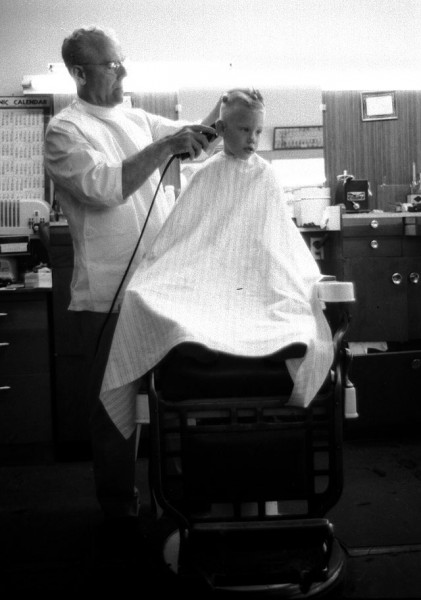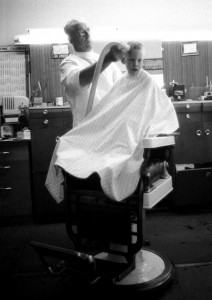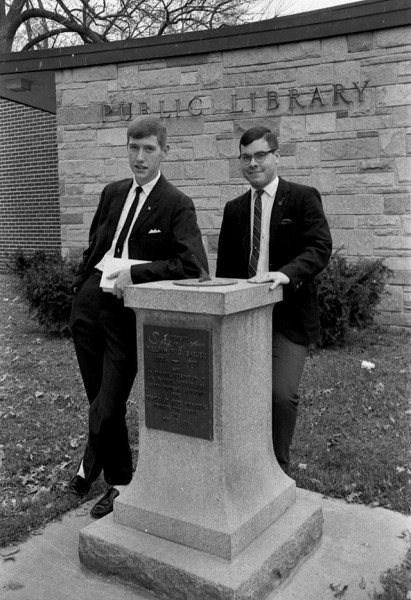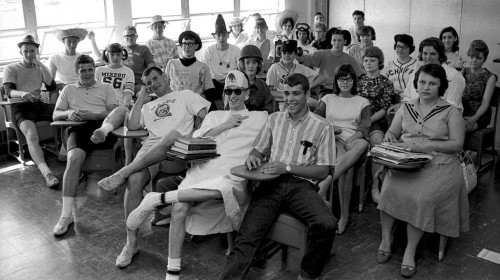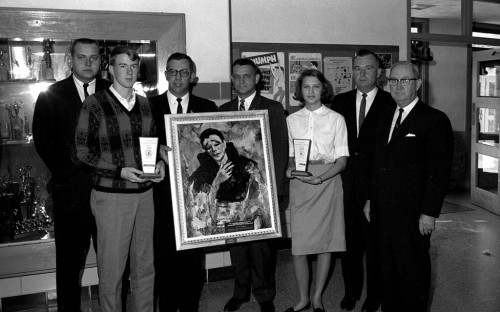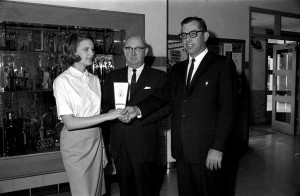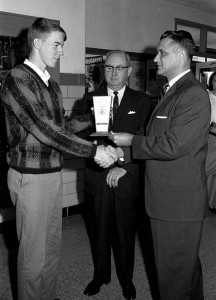This is another head-scratcher. I have no clue where these pictures were taken, nor who is in them. (Click on any photo to enlarge it, then step through them by clicking on the left or right side of the picture.)
[Important update: just about everything I wrote here is wrong. The pictures were taken in Jackson, not Cape. For info about the Santa, go here. For the drug store and other shopper pictures, go here.]
Rexall Drugs
 The only clue I have in a couple of them is that there is a Rexall sign in the window. As far as I know, there were two Rexall drug stores in town.
The only clue I have in a couple of them is that there is a Rexall sign in the window. As far as I know, there were two Rexall drug stores in town.
- Finney Drug Store, 709 Broadway
- Unnerstall’s Drug Store, 630 Good Hope
If you look out the window, there a store across the street that’s selling bananas. Dr. Wilson’s office was pretty much directly across from Finney’s and I can’t see him selling bananas, so that leads me to believe that this was Unnerstall’s.
I wonder who the perky blonde was and what she was promoting.
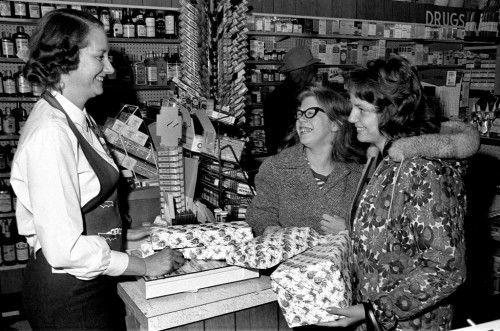 Liquor on the shelves
Liquor on the shelves
I didn’t think drug stores sold liquor, but The Southeast Missourian’s Out of the Past column had this item:
75 years ago: Feb. 6, 1934
Frank Unnerstall, proprietor of Unnerstall’s Drug Store, 626 Good Hope St., has been issued the first city license to sell liquor at retail by the package.
That’s another reason to think it was Unnerstall’s.
Checking out Santa Claus
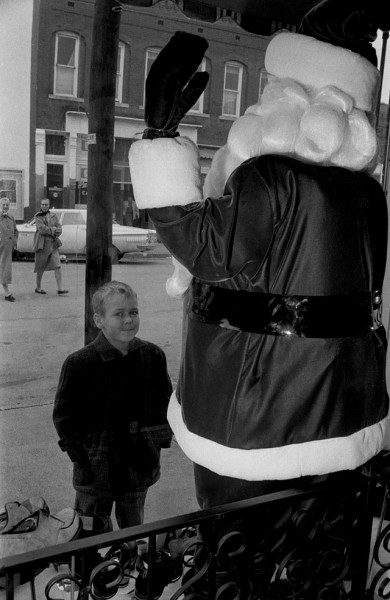 There are a few clues to the location of where the boy and Santa, but not enough for me to pull an address out.
There are a few clues to the location of where the boy and Santa, but not enough for me to pull an address out.
The two-story brick building across the street has a window sign that starts with “Pa” before it’s cut off by the power pole. The “Ca” below it makes me wonder if it’s a cafe.
I looked through all the pictures I took of Broadway and Main Street last month and couldn’t find any existing building that matched the architecture enough for me to make a good guess.
I hope one of you will leave a comment if you know where it is.
Interior shots give no clues
The interior photos were taken in several different stores, but I don’t have any idea where they were. I sent copies to my Mother, who seemingly knows everyone in town, but she drew a blank, too.
Here’s a gallery of all the photos
(As always, click on an image to make it larger.)











